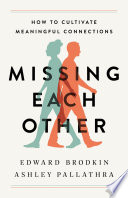

Empathy is a cornerstone of effective communication. In 'Missing Each Other,' the authors argue that many misunderstandings stem from a lack of empathy. This means not just hearing words but understanding the emotions and intentions behind them. The book emphasizes that empathy allows individuals to connect on a deeper level, fostering trust and reducing conflict. It encourages readers to practice active listening, which involves paying full attention to the speaker, reflecting back what is said, and validating feelings. This practice can transform interactions, whether in personal relationships or professional settings, leading to more meaningful connections and less miscommunication.
Continue readingPeople have varying communication styles that can lead to misinterpretations. The book categorizes these styles into several types, such as analytical, driver, expressive, and amiable. Each style has its strengths and weaknesses, and understanding these can help individuals tailor their communication strategies. For example, analytical communicators prefer data and facts, while expressive types thrive on storytelling and emotional engagement. By recognizing these differences, individuals can adjust their approach to foster clearer dialogues and minimize the chances of 'missing' each other in conversations. This understanding is crucial in both personal relationships and workplace dynamics.
Continue readingContext is vital in shaping how messages are received and interpreted. The authors highlight that the same words can carry different meanings depending on the context in which they are spoken. This includes the physical environment, cultural background, and emotional state of the individuals involved. The book provides examples of how context can alter perceptions and suggests that individuals should be mindful of these factors when communicating. By being aware of the context, one can better navigate conversations and avoid misunderstandings that arise from misinterpretation of intent or emotion.
Continue readingIn the digital age, technology has transformed the way we communicate. While it offers convenience, it can also lead to a decrease in face-to-face interactions and an increase in miscommunication. The book discusses the nuances of digital communication, including the lack of non-verbal cues that often accompany in-person conversations. This can result in misunderstandings and emotional disconnects. The authors encourage readers to be intentional about their communication methods, suggesting a balance between digital and personal interactions to maintain strong relationships. They advocate for using technology as a tool to enhance communication rather than replace it.
Continue readingTrust is foundational to any relationship, and vulnerability plays a critical role in building it. 'Missing Each Other' emphasizes that sharing personal experiences and emotions can foster deeper connections. The authors argue that being open about one's feelings and experiences can encourage others to do the same, creating a safe space for authentic communication. This vulnerability can lead to increased empathy and understanding, ultimately bridging gaps that may exist between individuals. The book offers strategies for cultivating vulnerability in conversations, such as sharing stories, expressing emotions honestly, and creating a supportive environment.
Continue readingConflict is inevitable in any relationship, but how it is managed can make a significant difference in outcomes. The book outlines various conflict resolution strategies that are rooted in effective communication principles. It encourages individuals to approach conflicts with a mindset of collaboration rather than competition. Techniques such as active listening, seeking common ground, and using 'I' statements to express feelings without blaming others are discussed. The authors stress that resolving conflicts constructively can lead to stronger relationships and a better understanding of each other's perspectives.
Continue readingEffective communication is not a one-time achievement but a continuous journey. The authors advocate for ongoing self-reflection and learning to improve communication skills. This includes seeking feedback from others, being open to adjusting one’s style, and practicing new techniques regularly. The book provides exercises and tools to help individuals assess their communication habits and identify areas for growth. By committing to this process, individuals can enhance their interactions and reduce instances of 'missing' each other in conversations.
Continue reading